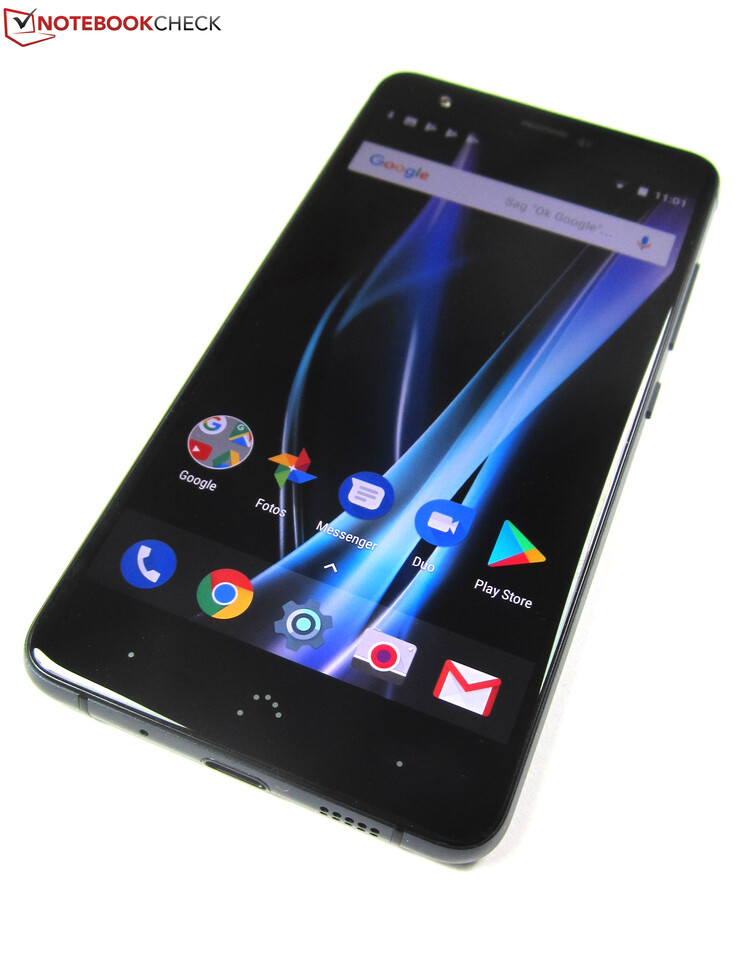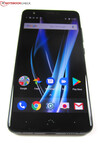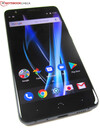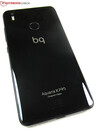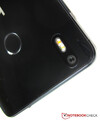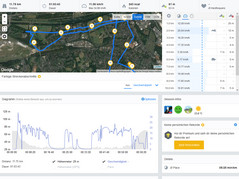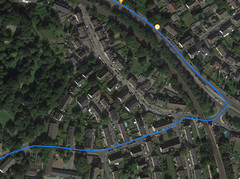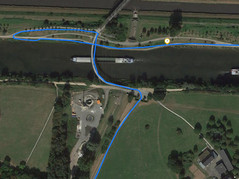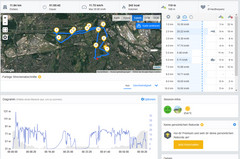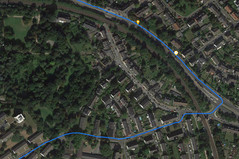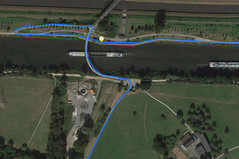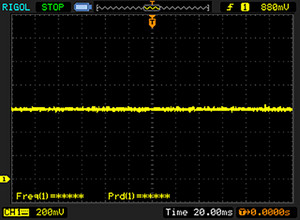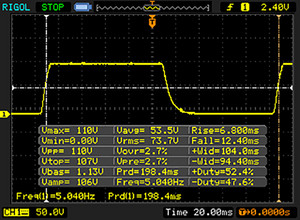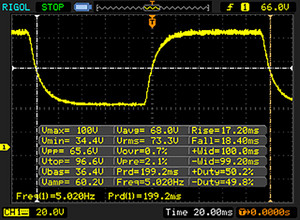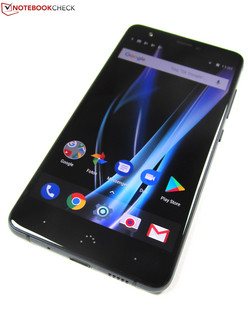Breve Análise do Smartphone BQ Aquaris X Pro
Os Top 10
» Os Top 10 Portáteis Multimídia
» Os Top 10 Portáteis de Jogos
» Os Top 10 Portáteis Leves para Jogos
» Os Top 10 Portáteis Acessíveis de Escritório/Empresariais
» Os Top 10 Portáteis Premium de Escritório/Empresariais
» Os Top 10 dos Portáteis Workstation
» Os Top 10 Subportáteis
» Os Top 10 Ultrabooks
» Os Top 10 Conversíveis
» Os Top 10 Tablets
» Os Top 10 Smartphones
» A melhores Telas de Portáteis Analisadas Pela Notebookcheck
» Top 10 dos portáteis abaixo dos 500 Euros da Notebookcheck
» Top 10 dos Portáteis abaixo dos 300 Euros
Size Comparison
| Networking | |
| iperf3 transmit AX12 | |
| ZTE Axon 7 | |
| Samsung Galaxy A5 2017 | |
| BQ Aquaris X Pro | |
| Huawei Nova Plus | |
| iperf3 receive AX12 | |
| ZTE Axon 7 | |
| BQ Aquaris X Pro | |
| Samsung Galaxy A5 2017 | |
| Huawei Nova Plus | |
| |||||||||||||||||||||||||
iluminação: 88 %
iluminação com acumulador: 458 cd/m²
Contraste: 898:1 (Preto: 0.51 cd/m²)
ΔE ColorChecker Calman: 7.1 | ∀{0.5-29.43 Ø4.78}
ΔE Greyscale Calman: 10.5 | ∀{0.09-98 Ø5}
Gamma: 2.28
CCT: 8951 K
| BQ Aquaris X Pro IPS, 1920x1080, 5.2" | Huawei Nova Plus IPS, 1920x1080, 5.5" | Samsung Galaxy A5 2017 Super AMOLED, 1920x1080, 5.2" | Honor 8 IPS, 1920x1080, 5.2" | ZTE Axon 7 AMOLED, 2560x1440, 5.5" | |
|---|---|---|---|---|---|
| Screen | 20% | 47% | 17% | 8% | |
| Brightness middle (cd/m²) | 458 | 485 6% | 539 18% | 451 -2% | 328 -28% |
| Brightness (cd/m²) | 473 | 481 2% | 542 15% | 443 -6% | 334 -29% |
| Brightness Distribution (%) | 88 | 90 2% | 93 6% | 93 6% | 88 0% |
| Black Level * (cd/m²) | 0.51 | 0.5 2% | 0.4 22% | ||
| Contrast (:1) | 898 | 970 8% | 1128 26% | ||
| Colorchecker dE 2000 * | 7.1 | 4.2 41% | 1.6 77% | 5.4 24% | 4.6 35% |
| Colorchecker dE 2000 max. * | 14.5 | 7.9 46% | 2.6 82% | 9.9 32% | 14.7 -1% |
| Greyscale dE 2000 * | 10.5 | 4.8 54% | 1.5 86% | 6.7 36% | 2.8 73% |
| Gamma | 2.28 96% | 2.36 93% | 2.28 96% | 2.33 94% | 2.29 96% |
| CCT | 8951 73% | 7568 86% | 6422 101% | 8262 79% | 6612 98% |
* ... menor é melhor
Cintilação da tela / PWM (modulação por largura de pulso)
| Tela tremeluzindo / PWM não detectado | |||
[pwm_comparison] Em comparação: 53 % de todos os dispositivos testados não usam PWM para escurecer a tela. Se PWM foi detectado, uma média de 8098 (mínimo: 5 - máximo: 343500) Hz foi medida. | |||
Exibir tempos de resposta
| ↔ Tempo de resposta preto para branco | ||
|---|---|---|
| 19.2 ms ... ascensão ↗ e queda ↘ combinadas | ↗ 6.8 ms ascensão | |
| ↘ 12.4 ms queda | ||
| A tela mostra boas taxas de resposta em nossos testes, mas pode ser muito lenta para jogadores competitivos. Em comparação, todos os dispositivos testados variam de 0.1 (mínimo) a 240 (máximo) ms. » 41 % de todos os dispositivos são melhores. Isso significa que o tempo de resposta medido é semelhante à média de todos os dispositivos testados (20.2 ms). | ||
| ↔ Tempo de resposta 50% cinza a 80% cinza | ||
| 35.6 ms ... ascensão ↗ e queda ↘ combinadas | ↗ 17.2 ms ascensão | |
| ↘ 18.4 ms queda | ||
| A tela mostra taxas de resposta lentas em nossos testes e será insatisfatória para os jogadores. Em comparação, todos os dispositivos testados variam de 0.165 (mínimo) a 636 (máximo) ms. » 49 % de todos os dispositivos são melhores. Isso significa que o tempo de resposta medido é pior que a média de todos os dispositivos testados (31.6 ms). | ||
| AnTuTu v6 - Total Score (classificar por valor) | |
| BQ Aquaris X Pro | |
| Huawei Nova Plus | |
| Samsung Galaxy A5 2017 | |
| Honor 8 | |
| ZTE Axon 7 | |
| PCMark for Android | |
| Work performance score (classificar por valor) | |
| BQ Aquaris X Pro | |
| Huawei Nova Plus | |
| Samsung Galaxy A5 2017 | |
| Honor 8 | |
| ZTE Axon 7 | |
| Work 2.0 performance score (classificar por valor) | |
| BQ Aquaris X Pro | |
| Huawei Nova Plus | |
| Samsung Galaxy A5 2017 | |
| Geekbench 4.4 | |
| 64 Bit Single-Core Score (classificar por valor) | |
| BQ Aquaris X Pro | |
| Huawei Nova Plus | |
| Samsung Galaxy A5 2017 | |
| 64 Bit Multi-Core Score (classificar por valor) | |
| BQ Aquaris X Pro | |
| Huawei Nova Plus | |
| Samsung Galaxy A5 2017 | |
| Compute RenderScript Score (classificar por valor) | |
| Huawei Nova Plus | |
| Samsung Galaxy A5 2017 | |
| GFXBench (DX / GLBenchmark) 2.7 | |
| T-Rex Onscreen (classificar por valor) | |
| BQ Aquaris X Pro | |
| Huawei Nova Plus | |
| Samsung Galaxy A5 2017 | |
| Honor 8 | |
| ZTE Axon 7 | |
| 1920x1080 T-Rex Offscreen (classificar por valor) | |
| BQ Aquaris X Pro | |
| Huawei Nova Plus | |
| Samsung Galaxy A5 2017 | |
| Honor 8 | |
| ZTE Axon 7 | |
| GFXBench 3.0 | |
| on screen Manhattan Onscreen OGL (classificar por valor) | |
| BQ Aquaris X Pro | |
| Huawei Nova Plus | |
| Samsung Galaxy A5 2017 | |
| Honor 8 | |
| ZTE Axon 7 | |
| 1920x1080 1080p Manhattan Offscreen (classificar por valor) | |
| BQ Aquaris X Pro | |
| Huawei Nova Plus | |
| Samsung Galaxy A5 2017 | |
| Honor 8 | |
| ZTE Axon 7 | |
| GFXBench 3.1 | |
| on screen Manhattan ES 3.1 Onscreen (classificar por valor) | |
| BQ Aquaris X Pro | |
| Huawei Nova Plus | |
| Samsung Galaxy A5 2017 | |
| Honor 8 | |
| ZTE Axon 7 | |
| 1920x1080 Manhattan ES 3.1 Offscreen (classificar por valor) | |
| BQ Aquaris X Pro | |
| Huawei Nova Plus | |
| Samsung Galaxy A5 2017 | |
| Honor 8 | |
| ZTE Axon 7 | |
| GFXBench | |
| on screen Car Chase Onscreen (classificar por valor) | |
| BQ Aquaris X Pro | |
| Huawei Nova Plus | |
| Samsung Galaxy A5 2017 | |
| Honor 8 | |
| ZTE Axon 7 | |
| 1920x1080 Car Chase Offscreen (classificar por valor) | |
| BQ Aquaris X Pro | |
| Huawei Nova Plus | |
| Samsung Galaxy A5 2017 | |
| Honor 8 | |
| ZTE Axon 7 | |
| JetStream 1.1 - Total Score | |
| Honor 8 | |
| ZTE Axon 7 | |
| Samsung Galaxy A5 2017 | |
| Huawei Nova Plus | |
| BQ Aquaris X Pro | |
| Octane V2 - Total Score | |
| Honor 8 | |
| ZTE Axon 7 | |
| Samsung Galaxy A5 2017 | |
| Huawei Nova Plus | |
| BQ Aquaris X Pro | |
| Mozilla Kraken 1.1 - Total | |
| BQ Aquaris X Pro | |
| Huawei Nova Plus | |
| Samsung Galaxy A5 2017 | |
| ZTE Axon 7 | |
| Honor 8 | |
| WebXPRT 2015 - Overall | |
| Honor 8 | |
| ZTE Axon 7 | |
| Samsung Galaxy A5 2017 | |
| BQ Aquaris X Pro | |
| Huawei Nova Plus | |
* ... menor é melhor
| BQ Aquaris X Pro | Huawei Nova Plus | Samsung Galaxy A5 2017 | Honor 8 | ZTE Axon 7 | |
|---|---|---|---|---|---|
| AndroBench 3-5 | 2% | -19% | 7% | 52% | |
| Sequential Read 256KB (MB/s) | 270.5 | 241.6 -11% | 182 -33% | 247.5 -9% | 406.5 50% |
| Sequential Write 256KB (MB/s) | 139.6 | 82.1 -41% | 77.1 -45% | 119.3 -15% | 150.9 8% |
| Random Read 4KB (MB/s) | 37.97 | 35.64 -6% | 22.41 -41% | 34.16 -10% | 121.1 219% |
| Random Write 4KB (MB/s) | 12.07 | 30.12 150% | 12.13 0% | 31.5 161% | 16.22 34% |
| Sequential Read 256KB SDCard (MB/s) | 78.7 | 41.64 -47% | 73.7 -6% | 53.7 -32% | 78.4 0% |
| Sequential Write 256KB SDCard (MB/s) | 49.77 | 33.32 -33% | 56 13% | 23.59 -53% | 51.3 3% |
| Asphalt 8: Airborne | |||
| Configurações | Valor | ||
| high | 30 fps | ||
| very low | 30 fps | ||
| Dead Trigger 2 | |||
| Configurações | Valor | ||
| high | 57 fps | ||
(±) A temperatura máxima no lado superior é 40.5 °C / 105 F, em comparação com a média de 35.2 °C / 95 F , variando de 21.9 a 247 °C para a classe Smartphone.
(+) A parte inferior aquece até um máximo de 37 °C / 99 F, em comparação com a média de 34 °C / 93 F
(±) Em uso inativo, a temperatura média para o lado superior é 32 °C / 90 F, em comparação com a média do dispositivo de 32.9 °C / ### class_avg_f### F.
BQ Aquaris X Pro análise de áudio
(+) | os alto-falantes podem tocar relativamente alto (###valor### dB)
Graves 100 - 315Hz
(-) | quase nenhum baixo - em média 26.4% menor que a mediana
(±) | a linearidade dos graves é média (10% delta para a frequência anterior)
Médios 400 - 2.000 Hz
(+) | médios equilibrados - apenas 4.5% longe da mediana
(+) | médios são lineares (5.9% delta para frequência anterior)
Altos 2 - 16 kHz
(±) | máximos mais altos - em média 11.1% maior que a mediana
(+) | os máximos são lineares (6.7% delta da frequência anterior)
Geral 100 - 16.000 Hz
(±) | a linearidade do som geral é média (26% diferença em relação à mediana)
Comparado com a mesma classe
» 65% de todos os dispositivos testados nesta classe foram melhores, 6% semelhantes, 28% piores
» O melhor teve um delta de 11%, a média foi 35%, o pior foi 134%
Comparado com todos os dispositivos testados
» 79% de todos os dispositivos testados foram melhores, 4% semelhantes, 16% piores
» O melhor teve um delta de 4%, a média foi 24%, o pior foi 134%
Samsung Galaxy A5 2017 análise de áudio
(+) | os alto-falantes podem tocar relativamente alto (###valor### dB)
Graves 100 - 315Hz
(-) | quase nenhum baixo - em média 15.5% menor que a mediana
(±) | a linearidade dos graves é média (9.1% delta para a frequência anterior)
Médios 400 - 2.000 Hz
(±) | médios mais altos - em média 9.4% maior que a mediana
(±) | a linearidade dos médios é média (7.6% delta para frequência anterior)
Altos 2 - 16 kHz
(±) | máximos mais altos - em média 5% maior que a mediana
(±) | a linearidade dos máximos é média (7.6% delta para frequência anterior)
Geral 100 - 16.000 Hz
(±) | a linearidade do som geral é média (23.6% diferença em relação à mediana)
Comparado com a mesma classe
» 53% de todos os dispositivos testados nesta classe foram melhores, 8% semelhantes, 39% piores
» O melhor teve um delta de 11%, a média foi 35%, o pior foi 134%
Comparado com todos os dispositivos testados
» 70% de todos os dispositivos testados foram melhores, 6% semelhantes, 24% piores
» O melhor teve um delta de 4%, a média foi 24%, o pior foi 134%
Huawei Nova Plus análise de áudio
(+) | os alto-falantes podem tocar relativamente alto (###valor### dB)
Graves 100 - 315Hz
(-) | quase nenhum baixo - em média 28.5% menor que a mediana
(-) | graves não são lineares (15.9% delta para frequência anterior)
Médios 400 - 2.000 Hz
(+) | médios equilibrados - apenas 3.5% longe da mediana
(+) | médios são lineares (5% delta para frequência anterior)
Altos 2 - 16 kHz
(±) | máximos mais altos - em média 5.7% maior que a mediana
(+) | os máximos são lineares (3.3% delta da frequência anterior)
Geral 100 - 16.000 Hz
(±) | a linearidade do som geral é média (21.3% diferença em relação à mediana)
Comparado com a mesma classe
» 40% de todos os dispositivos testados nesta classe foram melhores, 8% semelhantes, 52% piores
» O melhor teve um delta de 11%, a média foi 35%, o pior foi 134%
Comparado com todos os dispositivos testados
» 59% de todos os dispositivos testados foram melhores, 7% semelhantes, 34% piores
» O melhor teve um delta de 4%, a média foi 24%, o pior foi 134%
| desligado | |
| Ocioso | |
| Carga |
|
Key:
min: | |
| BQ Aquaris X Pro 3100 mAh | Huawei Nova Plus 3340 mAh | Samsung Galaxy A5 2017 3000 mAh | Honor 8 3000 mAh | ZTE Axon 7 3250 mAh | |
|---|---|---|---|---|---|
| Power Consumption | 17% | 26% | -9% | 1% | |
| Idle Minimum * (Watt) | 0.67 | 0.49 27% | 0.64 4% | 0.78 -16% | 0.64 4% |
| Idle Average * (Watt) | 1.7 | 1.63 4% | 1.36 20% | 1.89 -11% | 0.84 51% |
| Idle Maximum * (Watt) | 1.78 | 1.76 1% | 1.4 21% | 2.02 -13% | 0.87 51% |
| Load Average * (Watt) | 4.42 | 2.98 33% | 2.53 43% | 5.28 -19% | 6.02 -36% |
| Load Maximum * (Watt) | 6.3 | 4.99 21% | 3.63 42% | 5.44 14% | 10.45 -66% |
* ... menor é melhor
| BQ Aquaris X Pro 3100 mAh | Huawei Nova Plus 3340 mAh | Samsung Galaxy A5 2017 3000 mAh | Honor 8 3000 mAh | ZTE Axon 7 3250 mAh | |
|---|---|---|---|---|---|
| Duração da bateria | 21% | 47% | -17% | -11% | |
| Reader / Idle (h) | 30.7 | 34.1 11% | 40.3 31% | 24.8 -19% | 28.9 -6% |
| H.264 (h) | 10.7 | 12.2 14% | 16.4 53% | 8.8 -18% | 11.7 9% |
| WiFi v1.3 (h) | 12.2 | 13.7 12% | 14.1 16% | 8.3 -32% | 6.9 -43% |
| Load (h) | 4.2 | 6.1 45% | 7.8 86% | 4.3 2% | 4.1 -2% |
Pro
Contra
O BQ Aquaris X Pro é um smartphone de gama média muito decente que não tem problemas para se enfrentar com a concorrência. Muito pelo contrário: graças à sua robusta carcaça de metal/vidro de alta qualidade, o smartphone de 5,2 polegadas pode ser facilmente confundido com um dispositivo premium. O mesmo deve ser dito sobre a tela IPS de alta resolução com seu alto brilho e resolução FHD com boa definição.
Além disso, o Aquaris X Pro oferece uma câmera muito boa de 12 MP, um leitor de digitais confiável e rápido e um desempenho geral muito alto, resultando em jogabilidade fluida até mesmo os jogos mais exigentes, finalizando com um sensor GPS preciso, longa duração da bateria, Quick Charge, e uma porta USB Type-C.
O BQ Aquaris X Pro é um smartphone muito bom, com benefícios que compensam claramente suas limitações.
Há apenas algumas desvantagens que vale a pena notar, e eles estão longe estragar o show. Pense neles mais como pequenas falhas cosméticas.
Por um lado, o slot do cartão SIM secundário compartilha seu espaço com o leitor de cartão MicroSD - você pode usar um ou outro. A precisão de cores da tela é medíocre na melhor das hipóteses, mas apenas visível com equipamentos de medição profissionais e não a olho nu. Além disso, o Aquaris X Pro tem apenas um alto-falante, embora um pouco adequado.
BQ Aquaris X Pro
- 07/24/2017 v6 (old)
Manuel Masiero




